 Hey! Hello! It’s nice to have you around! You’re about to change your life.
Hey! Hello! It’s nice to have you around! You’re about to change your life.
There are many ways to greet the customer in your base. 74,4% of customers expects welcome message after subscribing or giving their email addresses – just like they expect that salesperson will greet them in brick and mortar store. But welcome emails aren’t only the question of being kind: they can significantly improve the efficiency of the rest of messages.
Today we send 140 billion emails daily. Try to imagine that sea of content! No wonder that we all, both marketers and customers, feel a bit lost in it. Welcome messages help organize that stream of information because user remembers the newsletter she subscribed to and learns what kind of materials will she get.
Create incredible shopping experience: download free ebook and revolutionize your e-store
Why to send a welcome message?
They’re 4 primary reasons why you should add welcome messages to your marketing arsenal.
– Because welcome messages show 86% higher OR and 196% higher CTR when compared to traditional emails (Social Mouths)
– To make a good first impression and start relationship from the right foot
– To prevent customers from forgetting about subscribing (reducing opt-outs)
– To make the first basic customer segmentation (ask customers in the email to choose a type of offer they want to get, i.e. according to gender or products).
Note: We included some of the creations in fragments to make this post easier to read.
1. What to expect?
Why people mark messages as spam or unsubscribe? One of the most frequent reasons is that messages they get differ from what they expected. That’s why it’s vital to let recipients know what kind of messages and how often do you send. You might as well ask the customer to define how often does she wants to heave her messages delivered.
But that knowledge shouldn’t get too technical: look how Fab combines information about the newsletter with great, distinct branding.
2. Personalize
It’s good to put customer’s name in the subject line and the content of an email. It will help you attract user’s attention and to establish a relationship. Take a look at Marie Forleo’s welcome message (we found it in the inspiring post by Ashley Hockney on Fedora blog). When you see it, you immediately feel a part of the community).
But remember that personalization can’t be limited to using customer’s name. It’s a complex set of actions aiming at delivering the right message to the right person at the right time. But how to find out what given user needs? One way is behavioral and demographic analytics, which – with a help of Marketing Automation – allows you to group customers into segments and send dynamic 1-to-1 messages. But you can also just ask your audience, as Buzzfeed does. As you see below, after subscribing you choose which topics interest you, so your messages are tailored to you.
Just ask and combine the knowledge from such survey with analytics.
Last week we described how Buyometrics implemented a similar strategy to achieve 7% CTA (See post How to improve your CTA).
It’s a digression, but remembering the difference between real and superficial personalization.
3. Say Thank you
It’s simple and very human; you want to do so instinctively. Say thank you! If somebody wants to give you space in her mailbox, that’s a good reason to be grateful.
4. Clear CTA
A key to the success of every email is to have one clear purpose and direct CTA that persuades the user to do so. Customers open and read welcome messages; that’s why it would be a waste to limit it just to thank you note. Encourage your recipient to visit your blog, take a look at the price list, or even buy.
See how General Assembly, an e-learning platform, does it:
5. Discount
Customers love discounts – it’s the main reason why they subscribe to newsletters. When somebody subscribes, it indicates her interest in the offer, so strike the iron when it’s hot. See Tory Burch welcome message with discount.
If you include a code with a discount, remember to make it easy to copy and paste at checkout.
6. Something remarkable
The welcome message should be unique and memorable. Show some brand spirit! Share emotions! Warby Parker, the producer of eyewear, includes a cute gif with dancing figures.
If you can make people laugh, that’s great potential for building lasting relationships (we wrote about in the post about the funniest marketing campaigns ever).
To sum up: how to create a successful welcome message
As we listed above, to create profitable welcome messages you should:
– Inform customers what kind of messages will you be sending
– Personalize (deeply, not in a superficial way)
– Thank your recipient
– Include one direct CTA to encourage audience to act
– Use a discount code to work on the emerging shopping intention
– Add something personal that will show brand’s uniqueness.
Mechanics of sending
In this post, we discussed the process of creating a message mostly, but it’s not the creation itself that changes customer’s experience. Here are some additional tips:
1) Be mobile friendly: more than a half of messages are opened on mobile devices,
2) React in Real Time: and send follow-up or welcome message instantly. User should get it right after subscription – that’s when she expects it
3) Add social media button: so reader can find you quickly in other channels,
4) Put recognizable senders name: so the user doesn’t have to guess or wonder what’s going on.
And do you use welcome messages? Which of creations listed above you like most?
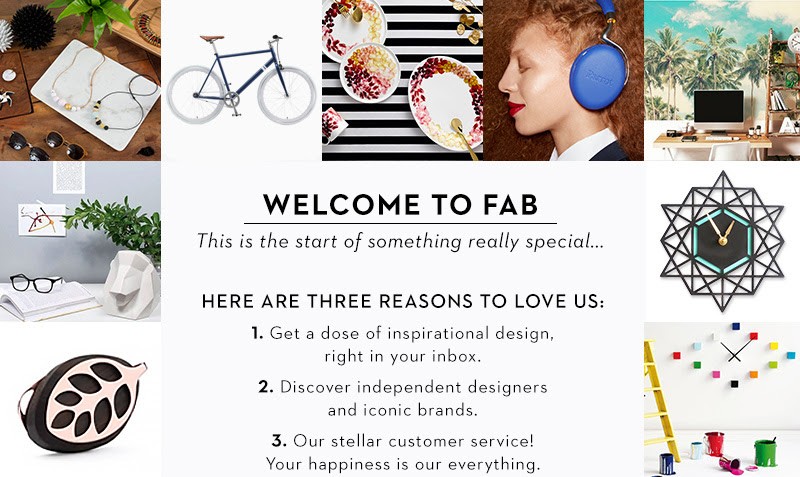
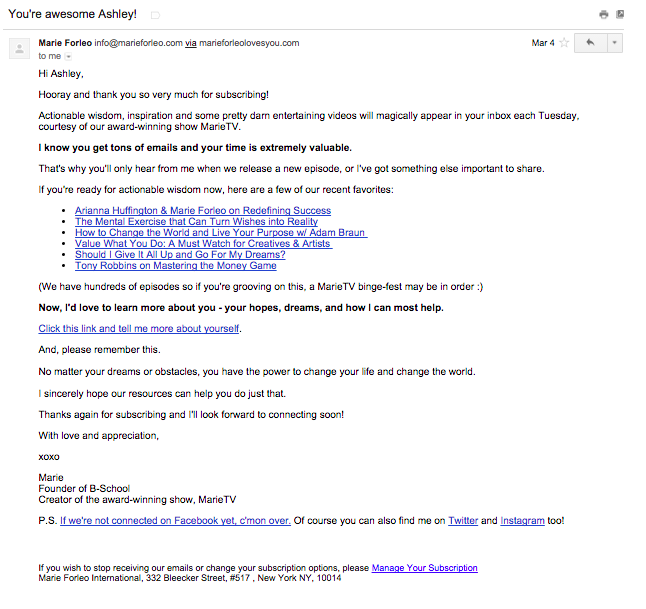
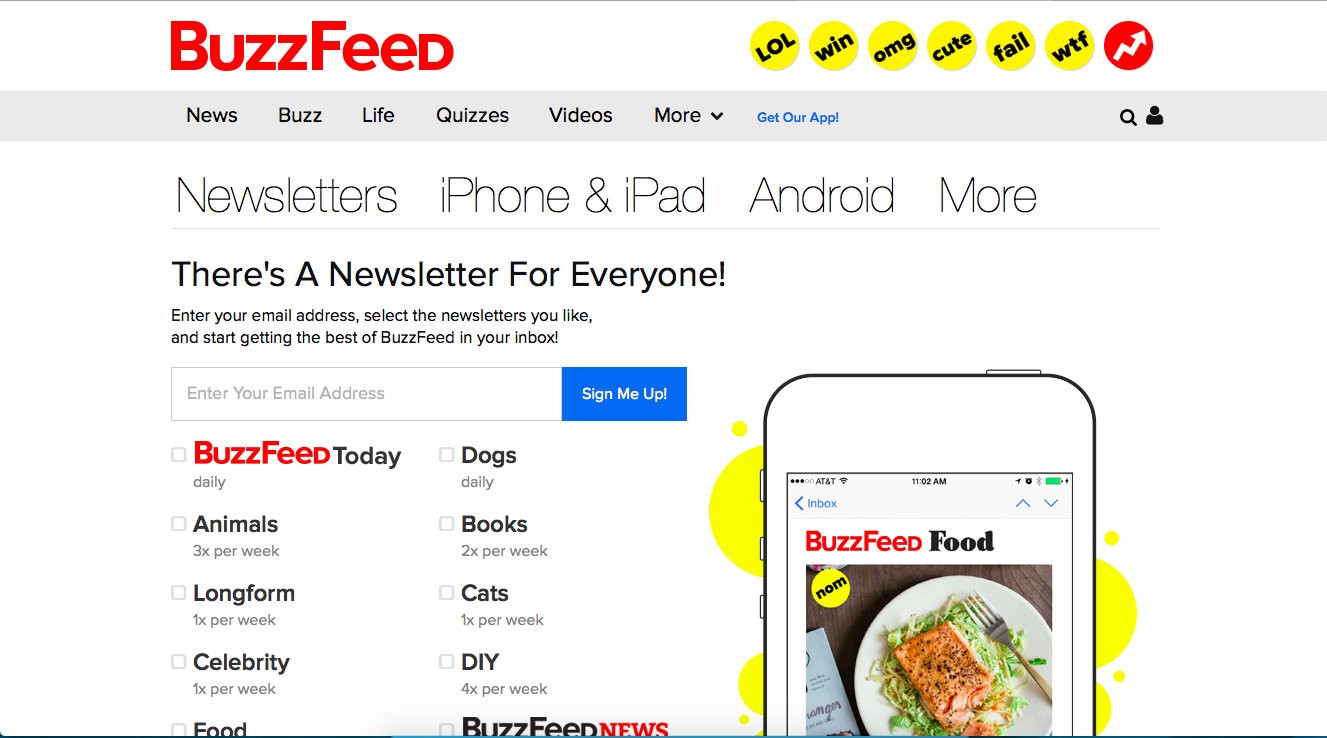
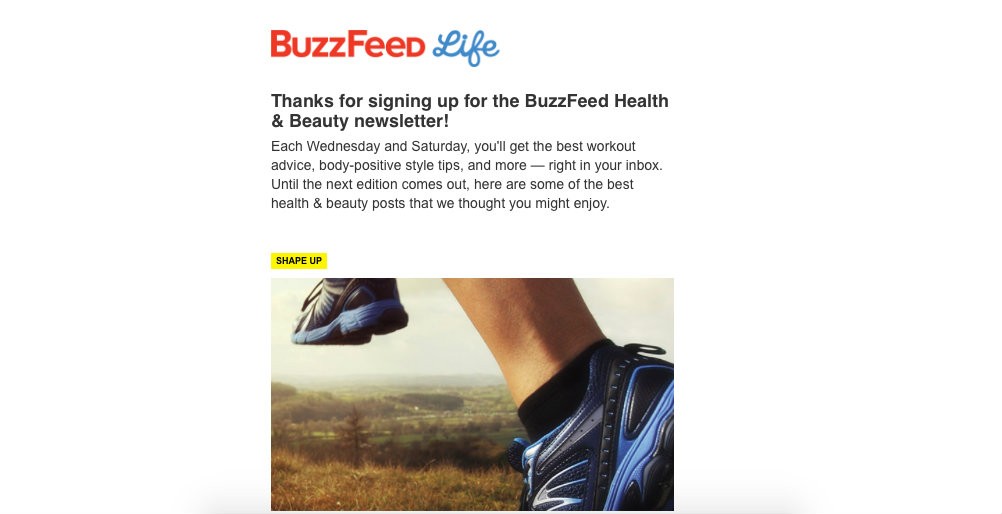
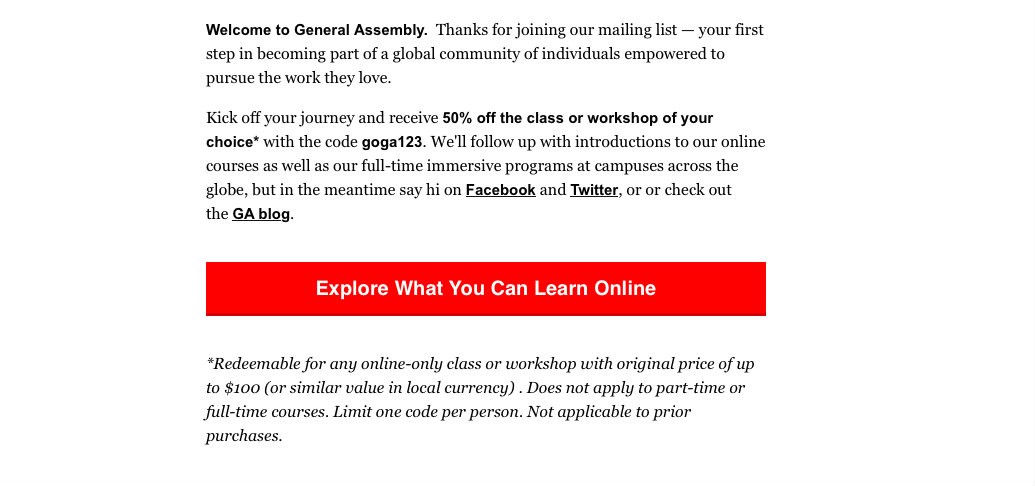
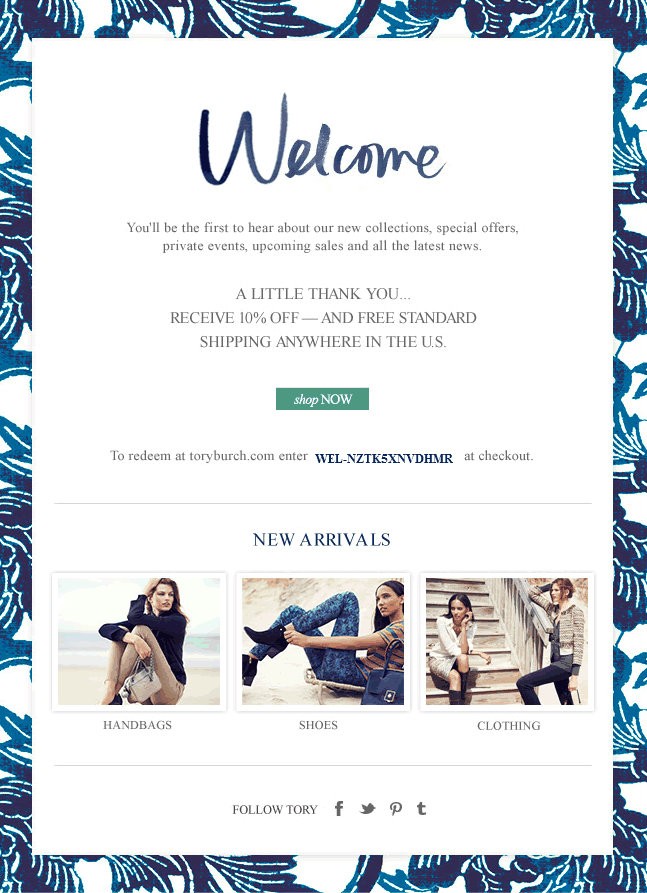
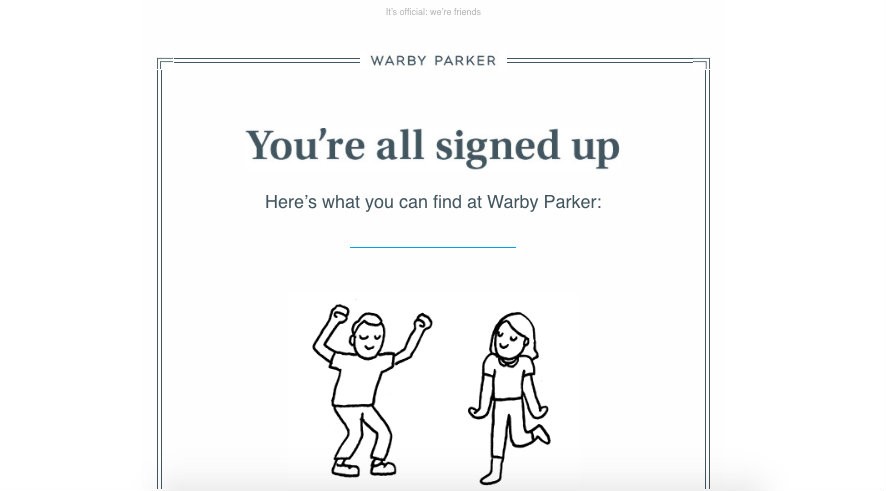
 Follow
Follow
















